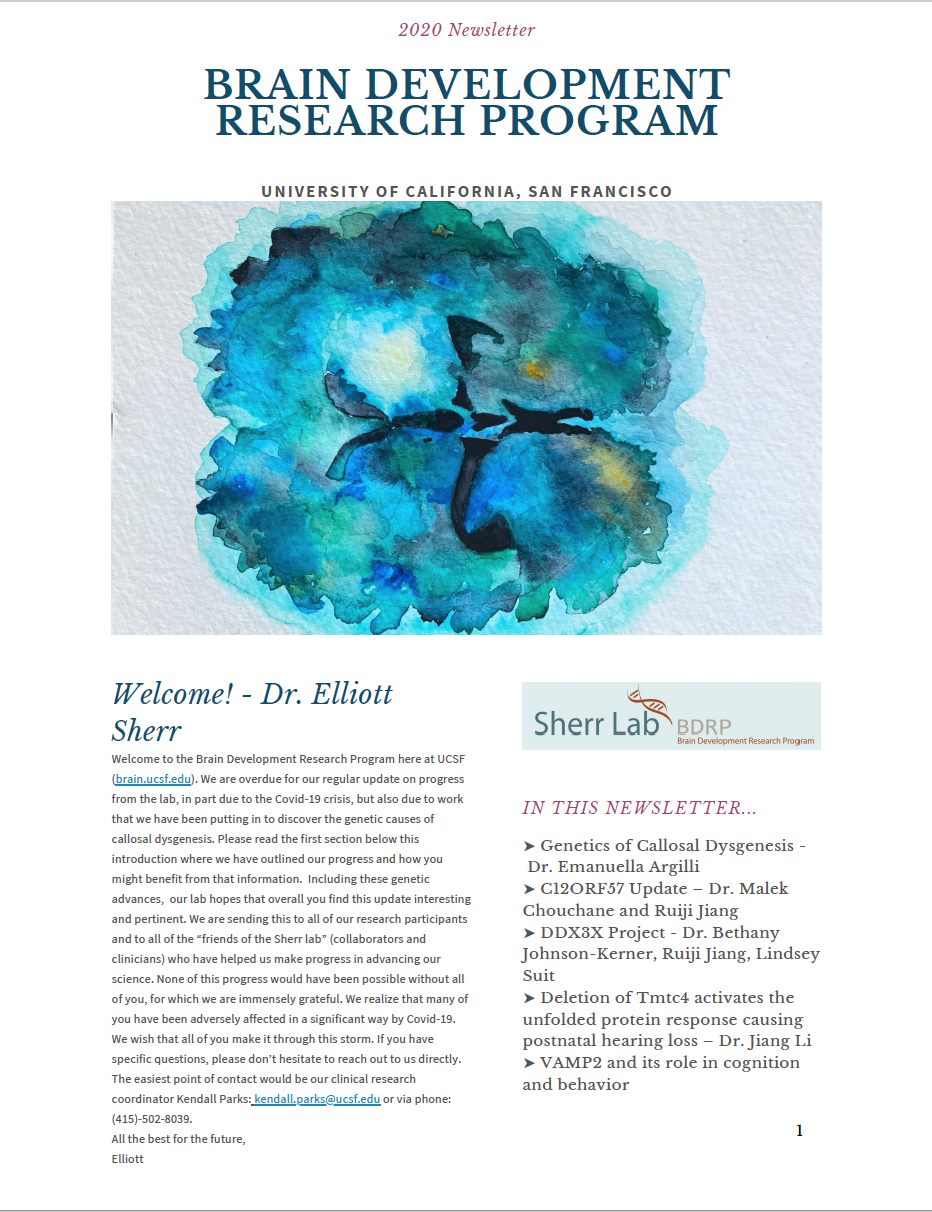Our research team aims to better understand the medical, cognitive, and social issues that individuals with neurodevelopmental disorders are likely to face. Likewise, we are aiming to better understand these disorders to be able to make better predictions regarding developmental trajectories, medical involvement, and social predispositions of individuals with neurodevelopmental disorders. Our team conducts regular chart reviews, and is currently developing and maintaining a comprehensive database of clinical data of individuals with neurodevelopmental disorders such as autism and epilepsy and associated brain developmental disorders including agenesis of the corpus callosum (ACC), hypoplastic or thin corprus callosum, periventricular nodular heterotopia (PVNH), polymicrogyria (PMG), Dandy Walker malformations (DM) and cerebellar hypolasia (CBLH), in order to review and analyze these records for common associations and distinguishing features.
Our lab and others have shown that de novo genetic events, events only seen in the individual with a neurodevelopmental disorder, play an important role in causing disorders of cerebral development. We are using high density single nucleotide polymorphism (SNP) arrays to identify de novo deletions, duplications and translocations. When candidate genes are identified, we are developing animal models (in mouse in our lab and in zebrafish in collaboration), to investigate the implications on cerebral development. Gene discovery and neurodevelopmental analysis in a mouse model of autism: We are investigating the mouse strain, BTBR T+tf/J (BTBR), that has both ACC and behaviors similar to those seen in autistic humans. BTBR mice display multiple social deficits as juveniles and adults, unusual vocalizations as infants and high levels of repetitive behaviors, representing the first, second and third diagnostic symptoms of autism, respectively. We have identified two loci that are the major contributors to the lack of the corpus callosum and are working aggressively to identify the causative genes. In collaboration with Jacki Crawley at the NIH and Ralph Adolphs at Caltech, we are investigating the interaction between the autistic behavior and genetics and also using advanced imaging and detailed histological analyses to begin to bridge the brain/behavior/gene interface. Gene Discovery in Aicardi Syndrome: A Special Case of Callosal Agenesis: In 1965 Dr. Jean Aicardi first described a syndrome of infantile spasms, chorioretinal lacunae and ACC. This disorder presents sporadically and only in females and XXY (Klinefelter) males, strongly suggesting that it is caused by de novo X chromosome mutations, which would be lethal in hemizygous males. These findings suggest that the causative gene may be critical to establishing neuronal and overall cerebral patterning during development. We are using a novel genetic approach, array capture, followed by high throughput sequencing to identify the gene in these patients and develop a model to study how this gene regulates cerebral development. The Genetics of Epilepsy: We have studied a mouse model of generalized epilepsy, called audiogenic seizures. These are present in the mouse strain, Black Swiss, and we have cloned the causative gene (GIPC3). This gene is localized to the plasma membrane and to rab5 positive endocytic vesicles. We are currently investigating how mutation of that gene affects neuronal excitability. We are part of a large multi-center epilepsy research consortium (EPGP;www.epgp.org). Through this group, we are studying the genetics of two types of severe childhood epilepsies, infantile spasms and Lennox Gastaut.
Our lab is heavily invested in better understanding brain developmental disorders regarding cognition and epilepsy by conducting in-depth analyses of both structural and functional imaging data. Our team carefully analyzes the structural findings found alongside a diagnosis of agenesis of the corpus callosum (ACC), periventricular nodular heterotopia (PVNH), polymicrogyria (PMG), Dandy Walker malformations (DM) and cerebellar hypolasia (CBLH), particularly those acquired by MRI and CT. We are also utilizing diffusion tensor imaging (DTI), a method for visualizing tractography, or connections within the brain, to better describe some of the functional connectivity changes linked to ACC, PVNG, PMG, DM and CBLH. We have also used functional MRI (fMRI) technology to give insight into connectivity and function in individuals with these disorders. To better understand specific task related brain function, our lab uses magnetoencephalography (MEG), allowing us to visualize and track brain activation during specific activities. In collaboration with the Simons Foundation, Dr. Sherr is also involved in directing the imaging core of the Simons VIP, a project focused on elucidating the neuroanatomical and behavioral changes associated with 16p11.2 copy number variants. Individuals with 16p11.2 copy number variants often exhibit different facets of autism, and the Simons Foundation is diligent to better understand the changes in behavior, neuroanatomy and pathophysiology associated with this genetic change. More information about this project can be found at http://simonsvipconnect.org/and https://sfari.org/sfari-initiatives/simons-vip.





